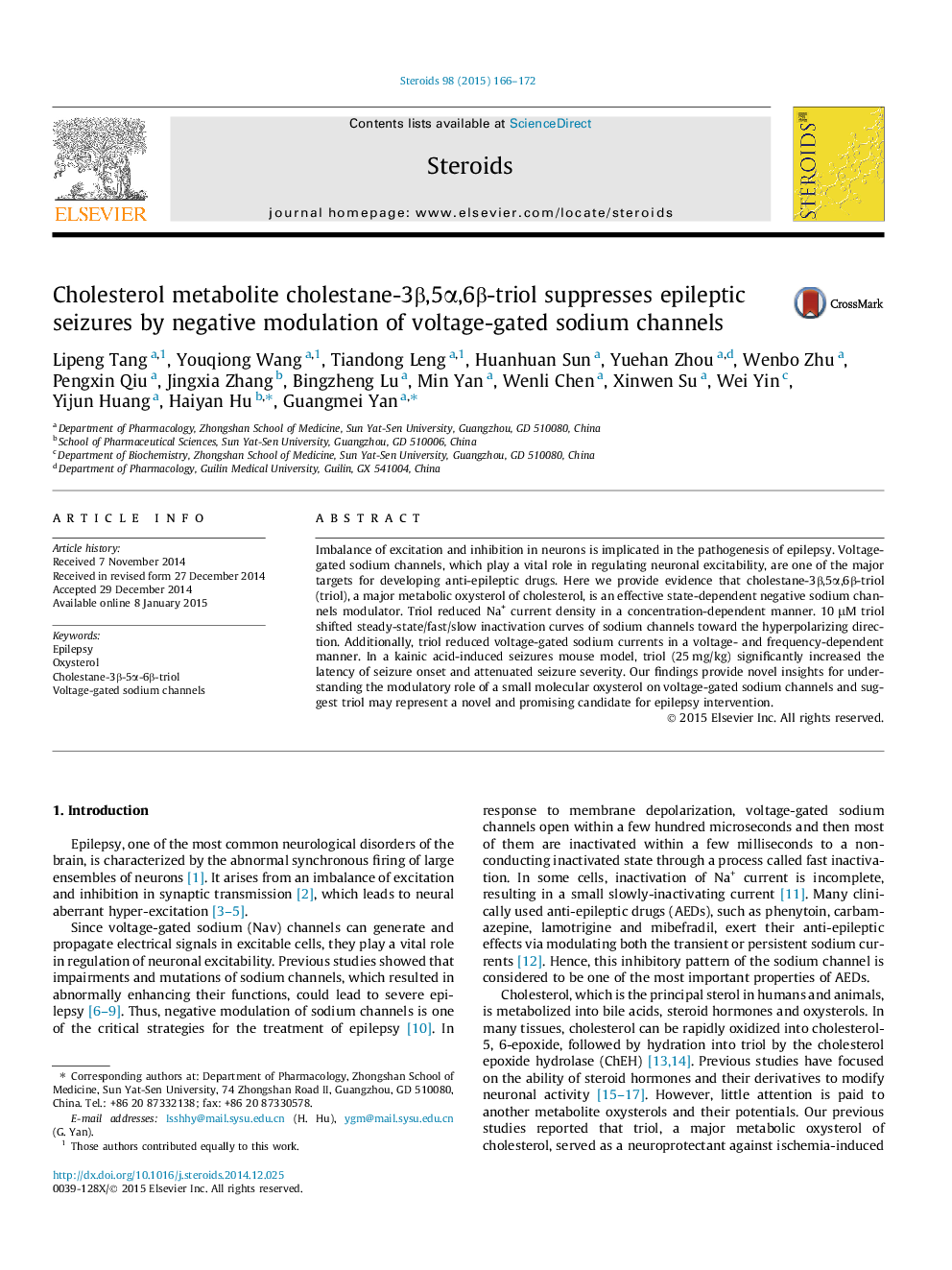| Article ID | Journal | Published Year | Pages | File Type |
|---|---|---|---|---|
| 2029179 | Steroids | 2015 | 7 Pages |
•Cholestane-3β,5α,6β-triol is an effective sodium channels blocker.•Triol has higher affinity for open and inactivated sodium channels compared to closed channels.•Triol has anticonvulsive effects in kainic acid-induced seizures model.
Imbalance of excitation and inhibition in neurons is implicated in the pathogenesis of epilepsy. Voltage-gated sodium channels, which play a vital role in regulating neuronal excitability, are one of the major targets for developing anti-epileptic drugs. Here we provide evidence that cholestane-3β,5α,6β-triol (triol), a major metabolic oxysterol of cholesterol, is an effective state-dependent negative sodium channels modulator. Triol reduced Na+ current density in a concentration-dependent manner. 10 μM triol shifted steady-state/fast/slow inactivation curves of sodium channels toward the hyperpolarizing direction. Additionally, triol reduced voltage-gated sodium currents in a voltage- and frequency-dependent manner. In a kainic acid-induced seizures mouse model, triol (25 mg/kg) significantly increased the latency of seizure onset and attenuated seizure severity. Our findings provide novel insights for understanding the modulatory role of a small molecular oxysterol on voltage-gated sodium channels and suggest triol may represent a novel and promising candidate for epilepsy intervention.
